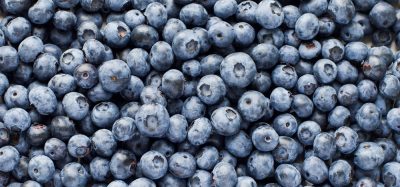What’s really in your soy sauce?
- Like
- Digg
- Del
- Tumblr
- VKontakte
- Buffer
- Love This
- Odnoklassniki
- Meneame
- Blogger
- Amazon
- Yahoo Mail
- Gmail
- AOL
- Newsvine
- HackerNews
- Evernote
- MySpace
- Mail.ru
- Viadeo
- Line
- Comments
- Yummly
- SMS
- Viber
- Telegram
- Subscribe
- Skype
- Facebook Messenger
- Kakao
- LiveJournal
- Yammer
- Edgar
- Fintel
- Mix
- Instapaper
- Copy Link
Posted: 4 September 2024 | Professor Chris Elliott | No comments yet
Professor Chris Elliott investigates the concerning food fraud risks posed by shortcuts in soy sauce production


About a year ago there was a scandal in China about the authenticity of some soy sauce brands and I wrote an article for New Food Magazine about this. Since them myself and some colleagues have been doing a much deeper dive into some of the fraud issues around soy sauce and this was recently published in a top scientific journal. I thought it might be of interest to share some of the major findings of this study with New Food readers.
Due to the increasing popularity of soy sauce globally, the current annual production is in excess of 10 million metric tons and due to the diversity of raw materials, production techniques, often lengthy and opaque supply chains there’s substantial opportunities for fraud. Some of these are very similar to many other types of food ingredients around false claims of being ‘GMO-free’, ‘organic’, ‘additive-free’ or ‘free-from’ but there are some that are very specific to the soy sauce.
Traditional soy sauce production requires many months of fermentation to generate the unique aroma and flavour many of us enjoy. But this is a costly process and some of soy sauce is also produced the ‘fast way’ by adding acid to rapidly hydrolyse the soy protein. This apparent shortcut has led to significant public concern as this process can also generate high levels of a chemical called 3-monochloropropane-1,2-diol (3-MCPD). This nasty compound is considered to be both genotoxic and carcinogenic and over the past two decades, most of the bans and recalls for soy sauce have been due to the finding of high levels of MCPD in samples tested.
The last time I had come across food safety issues associated with this chemical was in palm oil which created quite a scandal in Europe and caused Nutella to be removed from the shelves. I do wonder if at some point in time there will be a similar scandal around soy sauce.
The counterfeit problem
Another issue we came across in our research was the issue of the distribution and sale of counterfeit soy sauce. This seems to be either poor quality chemically produced products with additives such as brine, amino acids and caramel colouring added being passed for a high quality traditionally fermented product or a blend of both being manufactured to try and dupe consumers. The most recent report I’ve come across of counterfeit soy sauce being suspected of being sold in the market was in Nigeria at the end of last year.
One of the obvious questions that comes to mind (at least to my mind) is, if there’s any of the fake or potentially toxic soy sauce on the market currently in the UK? While I’ve no evidence (yet) to suggest this is the case one of my favourite expressions around food fraud is ‘when you go look for it, you will find it’. In terms of mainstream retail, as in many cases, the likelihood of finding adulterated or fake products is low. This is because they tend to buy from large manufacturers who have excellent traceability of production. However, when it comes to the smaller retailers, food service and on-line sellers who are not registered food business operators it’s often a very different story. Perhaps my trilogy on soy sauce will be complete once I report on the market survey that we are currently planning?









